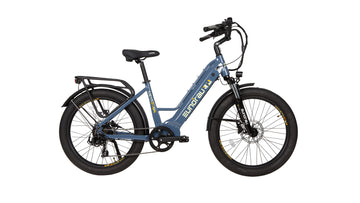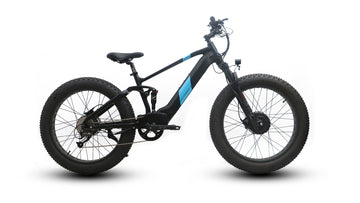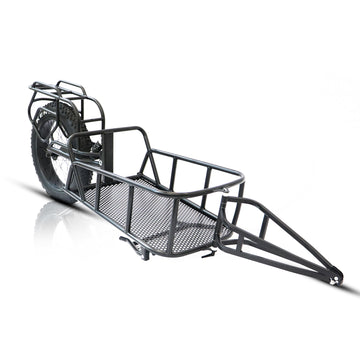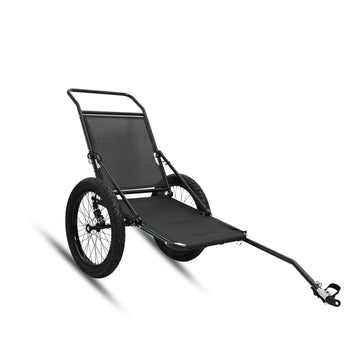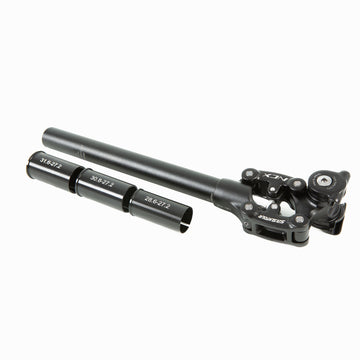
Mastering Smooth and Confident Hill Starts
Starting an e-bike on a hill can feel intimidating, especially for new riders. You might worry about rolling backward, losing balance, or draining the battery faster than expected. But with the right techniques, understanding of your bike’s power system, and a few adjustments to your setup, hill starts can become second nature. Riding uphill is not just about motor strength—it’s about coordination between rider, motor, and terrain. In this article, we’ll explore how to start an e-bike on hills smoothly, what features make hill starts easier, and how choosing the right e-bike can make all the difference.
Understanding the Challenge of Hill Starts
Starting on a slope poses a unique challenge because gravity works directly against forward motion. Unlike flat ground, where balance and acceleration are steady, hills demand torque, traction, and timing. Many riders mistakenly try to start with high pedal assistance or full throttle, causing wheel spin or abrupt jerks that make it harder to stabilize the bike.
To start effectively on a hill, your e-bike must provide consistent power delivery, while your own posture and control maintain traction. This coordination becomes easier when you understand how your motor behaves. Mid-drive motors, for example, deliver power through the bike’s gears, allowing smoother starts on inclines. Hub motors, while simpler, may require more throttle modulation or a small push-off to overcome the initial resistance.
Choosing the Right E-Bike for Hill Starts
Before you even begin riding on hills, choosing an e-bike with the right specifications is crucial. The best way to ensure effortless hill starts is by focusing on motor type, torque rating, and gearing system.
Mid-drive motors are the preferred choice for riders who frequently encounter hilly terrain because they utilize the bike’s drivetrain to amplify torque. A mid-drive system with 80 Nm or more can handle steep gradients without strain. Hub motors can still perform well on moderate slopes but are better suited for riders who mostly ride on gentle inclines.
Gearing also plays a major role. A wide-range cassette or an internal gear hub allows you to start in a low gear, giving your motor and legs a mechanical advantage. When paired with a responsive pedal-assist system, the start feels smooth and natural rather than forced.
Brands like Eunorau, known for designing e-bikes with both urban commuters and mountain adventurers in mind, often feature dual-motor setups or powerful mid-drives in models such as the DEFENDER-S or FAT-HS, ensuring that the bike provides enough torque to conquer hill starts effortlessly. While the model specifics are secondary here, the engineering principle remains: more torque and better gearing equal better control when starting uphill.
Setting Up Before the Hill
Preparation begins before you even start moving. When you know a hill is coming, shift to a lower gear before you stop. This reduces strain on the drivetrain and allows the motor to engage efficiently. Trying to shift gears under load can damage components and cause jerky starts.
Check your pedal-assist level as well. A medium setting (PAS 2 or 3 out of 5) often provides a balanced amount of assistance without overwhelming your control. Too high an assist level can lead to sudden surges of power, especially on steep grades.
Your body position also matters. When stopped on a slope, keep one foot firmly on the ground for balance, and the other on the pedal positioned around 1 or 2 o’clock—ready to push off. Lean slightly forward to center your weight over the front wheel; this prevents the bike from lifting or slipping backward.
Mastering the Hill Start Technique
Once you’re ready, the key is coordination. As you press down on the lead pedal, engage the motor with gentle throttle or by beginning to pedal smoothly. Avoid sudden acceleration; gradual power application helps maintain traction, especially if the road surface is gravelly or damp.
If your e-bike has a walk-assist or hill-start mode, use it—it provides a slow and steady push that helps you get rolling without wobbling. Riders with dual-motor bikes can activate both front and rear drives for improved grip and balance.
The first few pedal rotations are the most critical. Keep your cadence consistent, eyes forward, and avoid abrupt steering. Once momentum builds, you can increase assistance and shift to a higher gear. A good e-bike will deliver power progressively, allowing you to focus on balance and line choice rather than fighting the slope.
Managing Power and Battery Efficiency
Starting on hills requires more energy, both from you and your e-bike’s battery. Repeated steep starts can drain your range faster than expected. To manage efficiency, use your gears wisely rather than relying solely on maximum motor output.
Pedaling at a steady rhythm helps the motor maintain optimal RPMs, reducing strain and heat buildup. Most mid-drive systems perform best between 60–80 pedal revolutions per minute. If your e-bike’s display shows torque or power readings, keep them moderate instead of maxing out instantly.
For long rides in hilly regions, carrying an extra battery or using energy-saving assist modes can extend your range. Many riders underestimate how much gradient affects consumption—a hill that looks short might still double your power draw if started incorrectly.
Safety Considerations for Hill Starts
Safety always comes first. Make sure your brakes are functioning perfectly before stopping on an incline. Use the rear brake to prevent rolling backward while preparing to start. Some e-bikes feature motor inhibitors, which cut power when the brakes are engaged—ensure you release the brake before applying throttle or pedal assist.
If the slope is too steep or traffic conditions feel unsafe, it’s okay to walk your e-bike up using the walk-assist function. Modern electric bikes are designed to make even that process easier. Remember, control and confidence are more important than speed when starting on a hill.
Also, keep an eye on tire pressure. Underinflated tires may feel stable but can increase rolling resistance, while overinflated ones may lose traction. A balanced pressure gives you grip and control—especially vital during uphill starts on loose ground.
Improving with Practice
Like any skill, starting an e-bike on hills becomes easier with experience. Find a quiet hill or parking slope to practice different assist levels, gear combinations, and body positions. Notice how your bike responds to throttle or pedal inputs—each model behaves slightly differently.
Try practicing stop-and-start cycles on various gradients. The more you repeat, the more intuitive your movements become. Eventually, you’ll instinctively shift to the right gear, balance without wobbling, and modulate throttle precisely—all in one smooth motion.
Riders who master hill starts not only improve safety but also preserve their e-bike’s mechanical health. Smooth starts reduce wear on the chain, cassette, and motor gears, leading to longer-lasting performance.
Confidence Comes from Understanding
Starting an e-bike on a hill may seem tricky at first, but it’s ultimately about harmony—between you, your motor, and the road. The right preparation, bike setup, and body control turn what once felt daunting into something enjoyable and empowering.
Choosing a capable e-bike with good torque, smart gearing, and responsive power delivery—like those offered by brands such as Eunorau—will make the process even smoother. But the real secret lies in understanding your bike’s mechanics and practicing regularly.
When you combine technical knowledge with confident execution, hills stop feeling like obstacles and start becoming part of the adventure. Every start is a small victory—and every climb is proof of how far electric biking can take you.


